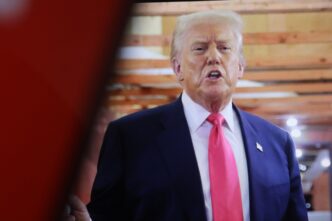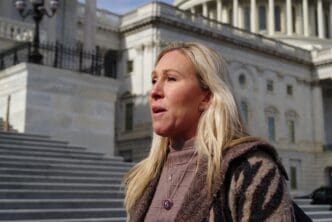Executive Summary
The Story So Far
Why This Matters
Who Thinks What?
The Federal Reserve is poised to announce its first interest rate cut since December on Wednesday at 2 p.m. ET, a move largely driven by concerns over a weakening U.S. labor market. This decision unfolds against a backdrop of intensified political pressure from President Donald Trump, who has consistently pushed for lower rates and recently saw his economic adviser confirmed to the central bank’s powerful Board of Governors.
Political Pressure on the Fed
President Trump has repeatedly criticized the Federal Reserve and its Chair, Jerome Powell, for not lowering interest rates sooner. He has publicly called Powell a “numbskull” and “mentally average,” and has previously attempted to remove him from his position.
The President’s efforts to influence the central bank extend to its personnel. He has sought to remove Fed Governor Lisa Cook and has pushed for the confirmation of his economic advisers to the Board. This includes Stephen Miran, Trump’s top economic adviser, who was confirmed by the Senate on Monday night and sworn in on Tuesday morning.
Miran’s confirmation to fill a term expiring in January 2026 is seen as a significant step for Trump in aligning the Fed with his ambitions for lower rates. Concerns have been raised about Miran’s decision to take unpaid leave from his White House post rather than resigning, potentially compromising the Fed’s legally mandated independence, despite his vow to act independently during his confirmation hearing.
Economic Drivers Behind the Cut
While the Consumer Price Index for August showed inflation nudged up to 2.9%, the primary impetus for the anticipated rate cut is the deteriorating labor market. Recent data indicated job growth has been weaker than expected, with the U.S. economy losing jobs in June—the first monthly decline in nearly five years.
Economists suggest that even a modest quarter-point rate cut could help bolster business confidence and provide a floor for the labor market. However, the extent to which such a cut will alleviate rising prices for American consumers remains uncertain.
Markets are largely pricing in a 96% chance of a quarter-point cut, with only a 4% chance of a larger half-point reduction. Some economists caution that a “jumbo-sized” cut could appear panicked or politically motivated rather than economically justified.
Market Expectations and Outlook
U.S. stocks were mixed Wednesday morning as traders awaited the Fed’s announcement. The Dow rose, while the S&P 500 remained flat and the Nasdaq Composite edged lower. Wall Street is keenly focused on signals regarding the future trajectory of interest rates and how the central bank balances concerns over a weakening job market with persistent inflation.
Investors anticipate that any hawkish elements in the Fed’s statement, Chair Powell’s press conference, or the staff economic projections could trigger market volatility. There is also a focus on how much weight Powell places on recent employment data versus inflation risks, with some analysts suggesting he might not be as dovish as current market pricing indicates.
Further economic data released Wednesday underscored the weakening economic picture, with building permits falling in August to their lowest level in over five years. This marks the fifth consecutive monthly decline and is considered a critical variable for predicting recessions by some economists.








